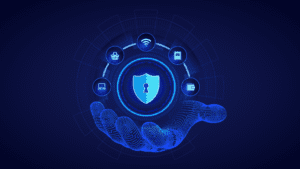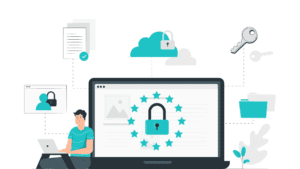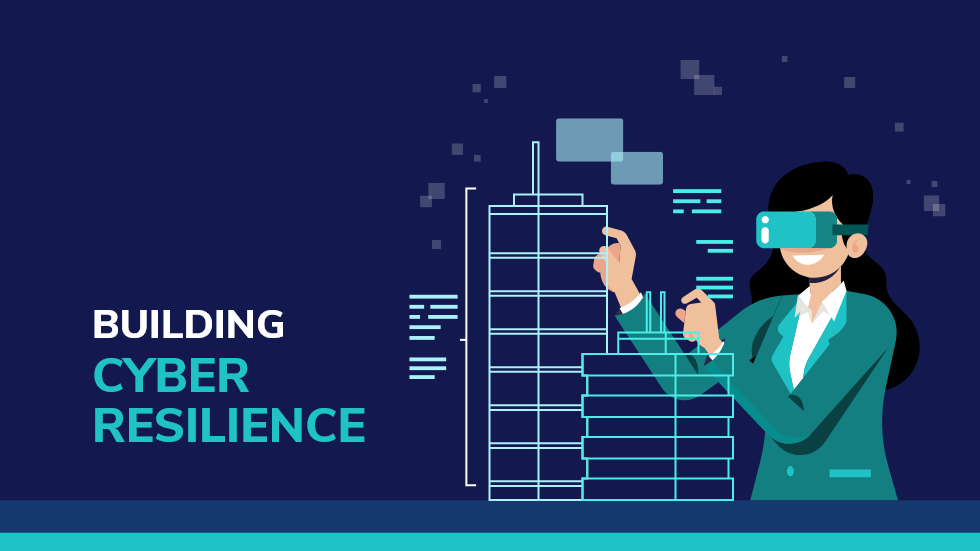In today’s digital age, where cyber threats loom around every corner, businesses must proactively safeguard their valuable assets. Cyber resilience, the ability to withstand, recover from, and adapt to cyber-attacks, is the key to staying one step ahead of ever-evolving adversaries.
This comprehensive blog will explore the top tools and technologies that play a pivotal role in fortifying an organization’s cyber resilience strategy. Let’s dive in and discover the powerful arsenal that can help us build robust defenses and secure our digital future.
Understanding the Cyber Threat Landscape
The cyber threat landscape is ever-evolving, with malicious actors continuously devising new and sophisticated ways to breach organizational defenses. Cyber-attacks, data breaches, and malware infections pose significant risks to businesses of all sizes and sectors. Social engineering tactics targeting the human element further amplify the threat. To build effective cyber resilience, organizations must first understand the types of threats they face and their potential impact.
In recent years, the rise of advanced persistent threats (APTs) and nation-state-sponsored attacks has added complexity to the threat landscape. Additionally, the Internet of Things (IoT) growth has introduced new vectors for cyber-attacks, with IoT devices becoming attractive targets for exploitation. Furthermore, cloud adoption has expanded the attack surface, requiring organizations to secure their cloud-based assets effectively.
The Pillars of Cyber Resilience

Threat Intelligence Platforms
- Understanding the Role of Threat Intelligence: Threat Intelligence Platforms act as vigilant sentinels, continuously monitoring the digital landscape for emerging risks, vulnerabilities, and malicious actors. They aggregate and analyze data from various sources, including open-source intelligence, commercial threat feeds, and dark web monitoring, to comprehensively view the threat landscape.
- Types of Threat Intelligence: Different types of threat intelligence offer unique insights. External threat intelligence focuses on external threats targeting an organization, while internal threat intelligence pertains to threats within the organization’s network. Tactical intelligence provides real-time information on specific threats, while strategic intelligence offers long-term insights into threat actors’ motivations and capabilities.
- Intelligence-Driven Defense: Implementing an intelligence-driven defense approach involves leveraging threat intelligence to identify potential threats, prioritize security efforts, and proactively implement measures to prevent attacks. Threat intelligence can be used to enrich security information and event management (SIEM) systems, intrusion detection systems (IDS), and firewalls to enhance their threat detection capabilities.
Endpoint Protection Solutions
- Endpoint Security Challenges: The proliferation of remote work and bring-your-own-device (BYOD) policies has expanded the number and diversity of endpoints. Securing these endpoints poses significant challenges, especially with the growing trend of shadow IT, where employees use unsanctioned devices and applications.
- Behavior-Based Analysis: Endpoint Protection Solutions leverage behavior-based analysis to detect malicious activities that may evade traditional signature-based detection. These solutions can identify and block potential threats by continuously monitoring endpoint behavior and analyzing patterns.
- Machine Learning and AI: Integrating machine learning and artificial intelligence (AI) enables Endpoint Protection Solutions to adapt to new and emerging threats. These technologies use historical data to identify patterns and anomalies, enabling more accurate threat detection and reducing false positives.
- IoT Endpoint Security: Securing IoT devices is critical as they often lack robust built-in security features. Endpoint Protection Solutions for IoT devices focus on securing communication channels, implementing device authentication, and ensuring data encryption.
Data Encryption

- Encryption Methods: Data encryption uses cryptographic algorithms to convert sensitive information into unreadable code, protecting it from unauthorized access. Symmetric encryption employs a single key for encryption and decryption, while asymmetric encryption uses a pair of public and private keys for encryption and decryption, respectively.
- Key Management: Effective key management is essential for secure data encryption. It involves generating, storing, distributing, and revoking encryption keys to ensure the confidentiality and integrity of encrypted data. Hardware security modules (HSMs) and key management platforms are used to manage encryption keys securely.
- Compliance and Data Privacy: Data encryption aligns with data protection regulations such as the General Data Protection Regulation (GDPR) and the Health Insurance Portability and Accountability Act (HIPAA). Compliance with these regulations is vital for organizations handling sensitive data.
- Full Disk Encryption (FDE) and File Encryption: Full Disk Encryption protects an entire storage device, while file encryption encrypts individual files or folders. Implementing a combination of FDE and file encryption provides comprehensive data protection.
Incident Response Platforms
- Incident Identification and Classification: Incident Response Platforms continuously monitor network traffic and system logs to detect and classify security incidents. They use behavioral analytics and anomaly detection to identify potential threats.
- Incident Containment and Mitigation: In the event of a security incident, incident response teams must act swiftly to contain the threat and prevent further damage. Incident Response Platforms provide real-time response playbooks to guide response actions effectively.
- Post-Incident Analysis: After containing an incident, post-incident analysis is conducted to understand the attack’s root cause, the extent of the damage, and any weaknesses in the organization’s defense. This analysis informs future security improvements and risk mitigation strategies.
Multi-Factor Authentication (MFA)

- Strengthening Authentication: Password-based authentication is susceptible to brute-force attacks and credential stuffing. MFA adds an extra layer of security by requiring users to provide multiple forms of identification, such as something they know (password), something they have (smartphone or token), and something they are (biometric data).
- MFA Implementation: Organizations can implement MFA across various access points, such as login portals, VPNs, and remote access systems. MFA should be carefully implemented to balance security and user experience.
- Biometrics and Beyond: Biometric authentication, such as fingerprint scanning and facial recognition, is gaining popularity due to its convenience and enhanced security. Emerging MFA technologies may incorporate biometric features and context-aware authentication, adapting to user behavior and location.
Backup and Disaster Recovery Solutions
- Data Backup Best Practices: Regular and frequent data backups are critical for cyber resilience. Organizations should adopt the 3-2-1 backup strategy, involving three copies of data on two different media, with one copy stored off-site.
- Disaster Recovery Strategies: Cloud-based disaster recovery solutions provide scalable and flexible recovery options. They enable rapid data restoration and system recovery, reducing downtime during a cyber incident.
- Business Continuity Planning: Backup and disaster recovery are essential to comprehensive business continuity planning. Organizations should regularly test their backup and recovery procedures to ensure they can restore operations effectively.
- Vendor Cyber Resilience: Organizations should assess the cyber resilience of their third-party vendors and partners. Implementing cyber resilience requirements in vendor contracts ensures the security of shared data and services.
Integrating Cyber Resilience Tools into an Organization

- Cyber Resilience Assessment: A cyber resilience assessment involves risk assessments and gap analyses to identify vulnerabilities and prioritize cyber resilience efforts. Organizations should assess their existing security measures and identify areas for improvement.
- Security Operations Center (SOC): Establishing a dedicated SOC or partnering with a managed security services provider (MSSP) enhances proactive threat monitoring and response capabilities. A SOC serves as the nerve center for incident detection and response.
- Cyber Resilience Policies: Developing and implementing policies that outline security best practices, incident response protocols, and acceptable use of technology. Regular security training and awareness programs ensure employees are well-informed and prepared to respond to cyber threats.
- Vendor Cyber Resilience: Organizations should assess the cyber resilience of their third-party vendors and partners. Implementing cyber resilience requirements in vendor contracts ensures the security of shared data and services.
Looking Ahead: Emerging Trends in Cyber Resilience

- Artificial Intelligence (AI) in Cybersecurity: AI-driven cybersecurity solutions are becoming more prevalent in detecting and responding to sophisticated threats. AI enables threat hunting and response automation, reducing the time to identify and mitigate threats.
- Automation and Orchestration: Automation of routine cybersecurity tasks streamlines incident response and frees up security analysts to focus on more complex threats. Security orchestration ensures seamless collaboration between security tools and teams.
- Threat Intelligence Sharing: Collaborative efforts among organizations and industry sectors strengthen the collective defense against cyber threats. Threat intelligence sharing platforms facilitate the exchange of threat information and indicators of compromise.
- Zero Trust Architecture: Zero Trust is an emerging security framework that assumes no user or device can be trusted by default. Instead, access is granted based on continuous authentication and authorization.
Conclusion
In conclusion, cyber resilience is not a single solution but a combination of top tools and technologies, training, and a proactive mindset. The dynamic and evolving nature of cyber threats requires continuous vigilance and adaptability.
By integrating the pillars of cyber resilience into their strategies, organizations can effectively navigate the digital landscape and safeguard their assets. Embracing cyber resilience is a proactive approach and a necessity in a world where digital risks are ever-present. Let’s build our digital fortresses and secure a resilient future.

Santiago Montoya, a seasoned DevOps engineer with a Eight-year tenure in the field, brings a wealth of experience. Santiago is a true visionary in the tech realm and holds the Global Director of Technology position at TechGenies. His expertise spans diverse domains, from cybersecurity and solution architecture to IT cost optimization. As a HIPAA-certified AWS Solutions Architect, he ensures top-tier security and architects robust solutions that transcend industry standards. Santiago is the driving force behind TechGenies’ technological prowess, orchestrating a symphony of innovation and efficiency.
Connect with Santiago to explore the intricacies of modern technology leadership and discover how he continues to shape the landscape of IT excellence.



